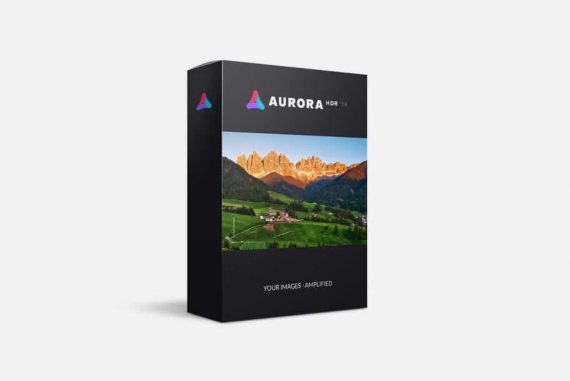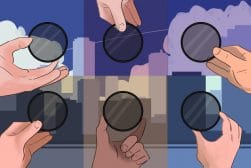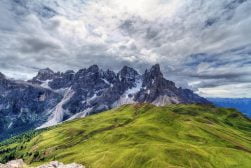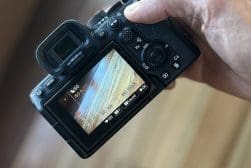
Guide to Dynamic Range in Photography
Understanding dynamic range is important if you want to make the most of your camera sensor's capabilities. Learn what it is, how to maximise it and more.
Learn | Photography Guides | By Greg Cromie
You’ve probably heard the term Dynamic Range (DR) used a lot in photography articles and camera reviews, but what exactly is it, and how does it relate to your photography and camera skills?
When I first got into photography, the concept of dynamic range confused me for ages, and I was too embarrassed to ask for help or admit I didn’t know.
That’s why we created this beginner-friendly guide – soon you’ll understand the key points about dynamic range and have the confidence to use it to your advantage in creating awesome images in 2024.
We’ve also included 6 helpful tips to help you maximise the dynamic range of your current camera.
Let’s dive right in!
What is Dynamic Range in Photography?
In a nutshell, dynamic range is the difference between the lightest and darkest tones in a photograph – from pure white to pure black.
DR is essential as every camera has a sensor that records image information in tones or grey shades. Some sensors can only see the detail from dark grey tones to light grey tones – but not quite pure white and black.
More importantly, a camera’s dynamic range refers to how many increments the image sensor can detect between pure black and white – plus the tones in between.
Those increments are known as stops, f-stops, stops of light or EV (Exposure Value) – let’s refer to them as stops from here on to keep it simple.
Stops are the unit of measurement used in photography for reading and controlling how much light a camera can see.
If each increment in the dynamic range is a single stop, then how many increments a camera can read determines how many stops of dynamic range it can capture.
Keep in mind that a camera sensor’s ability to detect a greater dynamic range depends on the quality of the image sensor.
What are the camera sensor sizes? Check our guide to learn all about them.
How We See Dynamic Range
When you see a camera advertised, it usually says how many stops of dynamic range the camera has. But this needs to be expanded a little beyond the sales pitch.
On average, a high-quality digital camera captures between 12 and 15 stops of dynamic range at the base level ISO, which is typically around 100. However, perfect lighting conditions must exist to measure the capacity – no dark shadows and no highlights.
Camera dynamic range is a physical attribute (or limitation, depending on how you look at it) of a camera.
If the lighting conditions increase or decrease, then the camera’s ability to read 15 stops of dynamic range diminishes.
What’s more, if you increase the camera’s ISO value, the dynamic range will drop considerably – more on that later.
While high-quality digital cameras can see up to 15 stops of dynamic range, the human eye can see almost 20 stops. But as with the cameras, that’s under perfect lighting conditions.
Think about situations where you walk into a dark room. It takes some time for your eyes to adjust before you can make out the details. Your eyes are adapting to the changed conditions to detect details in the darkness – your eyes are working with a lower DR.
How Much Do You REALLY Know About Photography?! 🤔
Test your photography knowledge with this quick quiz!
See how much you really know about photography...

Pop the lights on, and your dynamic range increases a lot with the scene brightening. Remember: in daily use, the dynamic range in the camera is not always as what’s advertised.
Why Does Dynamic Range Matter?

A sensor with greater dynamic range would allow the photographer to ‘pull back’ lost highlight detail in the sky using editing software.
Consider a scene on a bright sunny day where you can make out the details in the clouds and the landscape. It looks gorgeous, and you lift your camera to capture the pretty scene.
But when you look at your photograph, most of the landscape is well-lit, but some of the shadows have lost detail, and the sky is just pure white. That’s because our eyes have a greater dynamic range than cameras.
In other words, our eyes can make out the level of details in the shadows and the highlights better than our cameras can.
The never-ending pursuit of camera companies is to bridge the gap in the dynamic range seen by our eyes and their cameras. Whoever cracks that code wins the prize!
That’s why dynamic range matters in photography – so that cameras can capture close to what the human eye can see.
Plus, the more detail pulled from shadows and highlights, the greater the outcome.
How is Dynamic Range Measured?
In some circles, measurements of dynamic range include terribly complicated and notoriously dull mathematics.
In simple terms, DR in photography is the ratio between the lightest element and the darkest – also known as the contrast ratio.
Measured by stops (f-stops, stops of light, EV), a stop refers to a single unit of light. Each stop up or down in the dynamic range doubles or halves the value of light required to achieve correct exposure.
Do Megapixels Matter in Photography?
No doubt you’ve heard ‘camera talk’ discussing the number of megapixels a camera has. These are the light-sensitive receptors that cover the camera sensor.
A megapixel (MP) equates to one million pixels and indicates the amount and quality of detail a camera can capture. Traditionally, the higher the megapixels, the better the image quality.
For example, a typical Fujifilm X-series mirrorless camera has a 26-megapixel sensor – 26 million pixels. However, a Fujifilm GFX100S, a larger medium format camera with a larger sensor, has 102 megapixels – 102 million pixels.
Cameras with higher megapixel sensors tend to have a greater dynamic range – but not always.
Aside from the size of the camera sensor and the number of megapixels, the quality of the actual individual pixels is also critical to DR. It’s the individual pixel size and ability to detect light that’s most important.
Fewer, larger pixels are far better for dynamic range than more, smaller pixels.
How to Maximise Your Camera’s Dynamic Range
Remember the example we talked about earlier where your eye saw more of the landscape than the camera? What if I told you that several hacks could help you bridge the gap?
There are several ways to improve and maximise your camera’s dynamic range. What’s more, you can do so while out in the field with your camera in hand, or later on in editing apps.
Let’s take a look at the most common ways of improving DR in your photos and elevating your shooting experience.
Use Graduated ND Filters

Credit: Chris Yang
Landscape photography is a genre that has a lot of trouble optimising dynamic range with current sensor technology.
A landscape composition splits to roughly half the frame filled with a bright sky and the other half with darker land and shadows.
As we discussed earlier, digital bodies have trouble achieving a suitable balance where the sky and the land are both correctly exposed. Even the highest dynamic range camera in the market still needs a bit of help to get the best image.
(An example of a high dynamic range camera is the Sony a7R Mark V, although many modern full frame mirrorless cameras have great DR.)
The easiest way to manage this is with a Graduated Neutral Density filter.
GND filters are available in a range of sizes to suit most standard lens diameters. They screw to the front of the lens and, depending on their level of ‘density’, will reduce the amount of light by several stops.
Grad ND filters have the density applied to one half of the filter that transitions to a transparent section in the other half.
You frame your composition with the darker density half of the filter covering the sky. By exposing your shot for the land, you’ll ensure that the whole photograph is exposed correctly.
The sky will show its actual colour and you’ll get greater definition in the clouds – without unwanted highlights.
You can learn more about lens filters here, and work out how many stop ND filter you should buy.
Understand Your Histogram
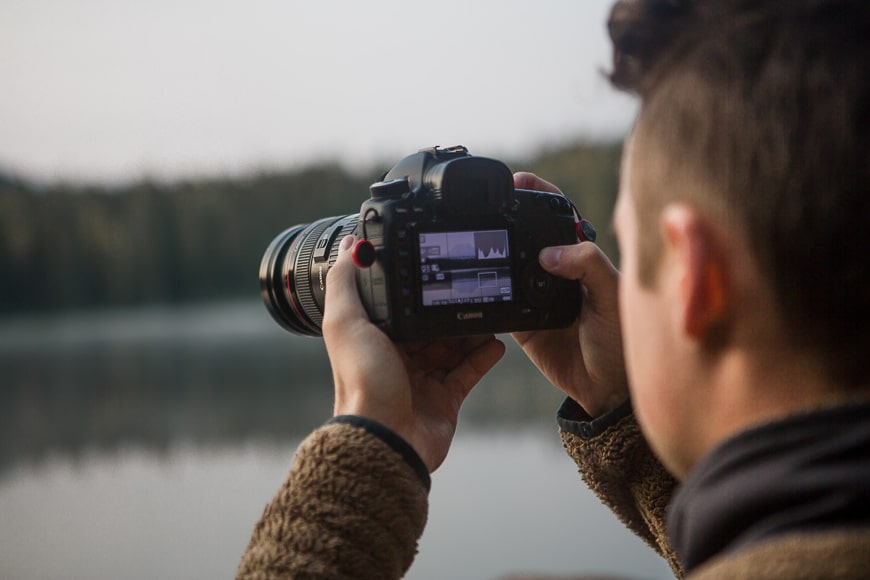
Most digital cameras have a histogram that appears on the screen – it’s a graphical representation of the scene’s pixel density.
Getting to know your histogram is a great way to understand and manage the dynamic range.
The histogram shows greater density to the left of the graph if your photograph is too dark. It will also show pixel density to the right if the scene is too intense on a sunny day or has too many highlights.
Too much pixel density at either end asks your camera to work beyond its dynamic range – and you’ll lose highlight or shadow detail.
Keeping your pixel density within the histogram’s boundaries ensures you’re optimising the camera’s dynamic range.
Check out our guide to understanding the histogram here.
Expose to the Right
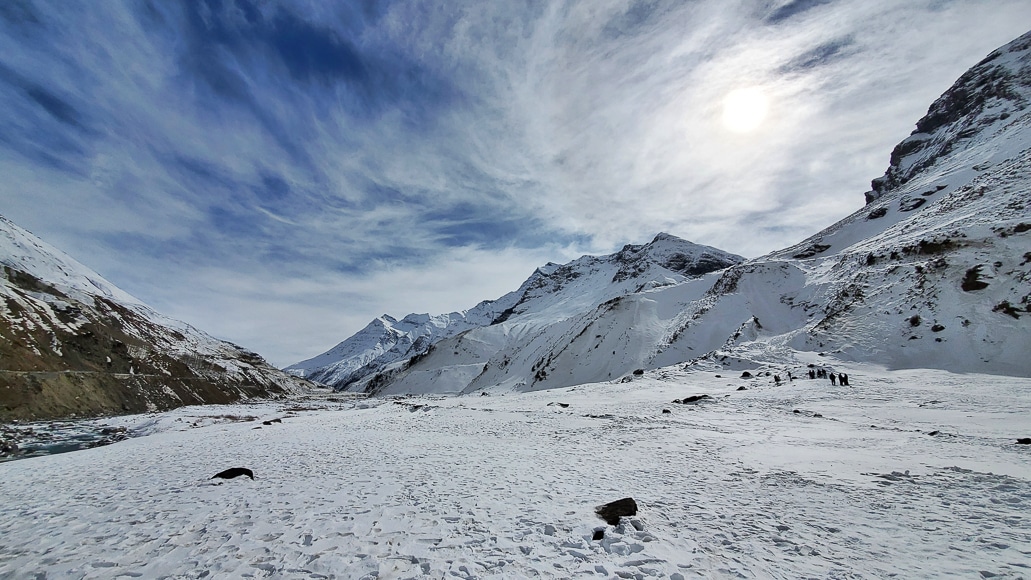
I know that I just said to keep the histogram pixel density from straying to the right or left too much. If shooting with a complex dynamic range and you have to choose between too bright and too dark, opt for too bright.
In doing so, your histogram will show greater pixel density to the right – without it all pushing up against the boundary.
Exposing to the right (‘ETTR’) is a term used to describe this technique.
Cameras are better at dealing with an overexposed or brighter dynamic range than with a darker one. Plus, highlights are often easier to recover in editing software.
Read more about underexposure vs overexposure here.
Shoot in RAW Format
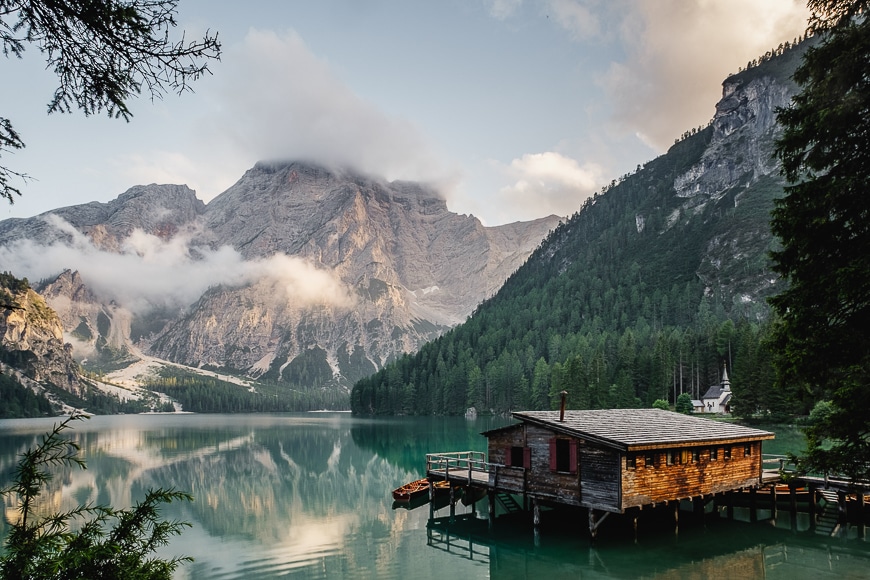
Digital cameras give you the option to shoot in JPEG and RAW formats. JPEG files are much smaller in size as they only contain the surface layer of photograph data and detail.
Generally, JPEGs are much harder to edit and correct in editing software.
RAW files are much bigger and contain all the uncompressed image data directly from the sensor. All that extra data means that you’re more likely to recover lost details in shadows and push back some of the highlights.
RAW files contain all of the camera’s dynamic range, and, using editing apps, we can make a photograph pop.
You can read more about the other differences between RAWs and JPEGs here.
Keep ISO Low
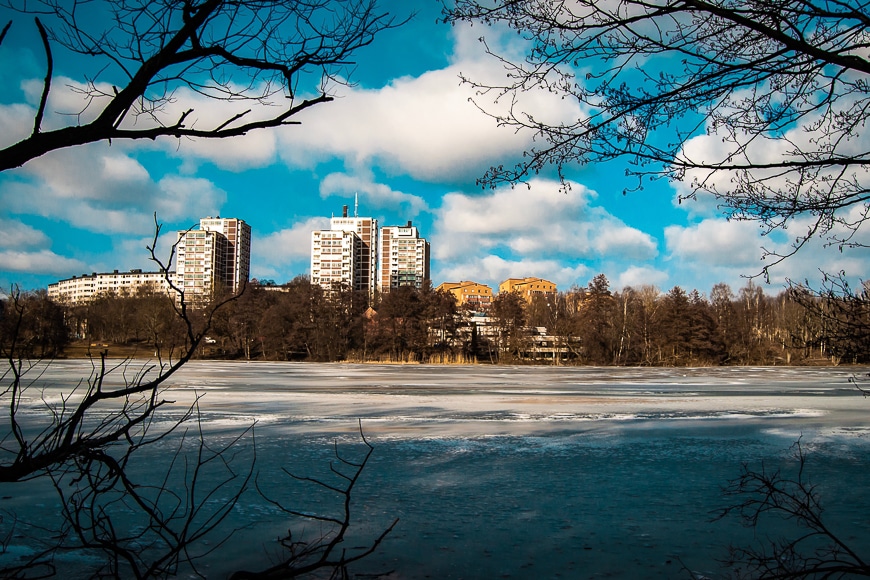
When optimising the dynamic range of your camera, keep your ISO as low as possible. It’s easier to do when shooting in bright conditions as we don’t rely on ISO to expose the photo correctly.
Increasing the ISO may make the whole photograph look brighter, but the camera’s range decreases in exchange. Each increase in ISO adds light but reduces the dynamic range.
Instead of increasing ISO, consider using a wider aperture or a slower shutter speed.
Learn more about ISO here.
Create HDR Images
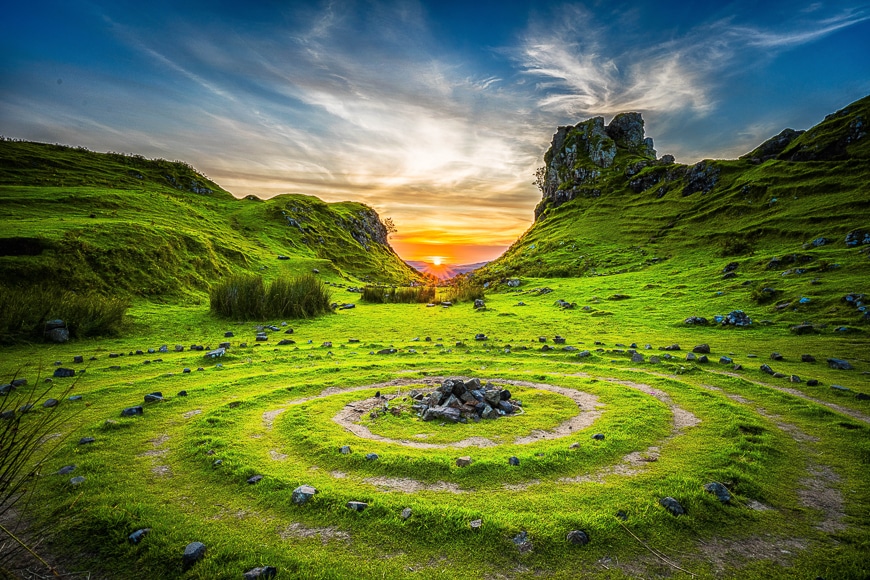
Creating a High Dynamic Range (HDR) photograph effectively overcomes dynamic range limitations when done right.
If you’re having trouble getting your camera to expose the light and dark areas of an image correctly, consider taking several photos with different exposures. Some cameras have bracketing functions to automate HDR photography.
By taking several photos of the same scene with varying degrees of exposure, you can later blend them in editing software to form a High Dynamic Range photo.
The blending process results in every area of the image being correctly exposed, thus increasing the photo’s DR. This is done because, unlike the human eyes which can see in High Dynamic Range, cameras do not. By combining several images, this limitation is mitigated.
Overdoing HDR photography often results in photos that look incorrect and overcooked. With the right balance and practice with HDR, you’ll have correct exposure and details in the shadows and highlights.
In a nutshell, High Dynamic Range photography is a careful combination of several photos with different exposures into one well-balanced picture.
Here’s a more in-depth guide to HDR photography, as well as a review of Aurora HDR, a software tool that helps simplify the editing process.
What Camera Has the Best Dynamic Range?
To a beginner, the dynamic range comparison doesn’t mean much. But to seasoned veterans, it could mean the difference between a good photo and an amazing one.
If you’re searching for digital cameras with the best dynamic range, there’s a lot to choose from. After all, there is no one best dynamic range camera in the market.
All the top camera brands strive to push the ceiling of dynamic range higher and higher with each generation of digital bodies.
As a result, most current-gen cameras from the leading brands have exceptional dynamic range averaging anywhere between 12 and 15 stops at varying ISOs.
The Nikon D850 tops the charts as the camera with the best Dynamic Range although several other models are close behind.
The next step for you is to determine what other features you’re looking for in a pro-grade digital camera to trim down your list of possible choices.
Generally, most brands offer professional cameras with best dynamic range.
Here’s our selection of the currently available cameras with the best dynamic range (we’ve linked to the Shotkit reviews where available):
- Nikon D850 – 14.8 stops at ISO 64
- Leica Q2 – 14.5 stops at ISO 400
- Canon EOS R – 14.1 stops at ISO 800.
- Leica CL – 13.6 stops at ISO 100.
- Canon EOS M50 – 13.4 stops at ISO 100.
- Olympus OM-D E-M10 Mark III – 12.3 stops at ISO 800.
- Canon 5D Mark IV – 13.6 stops at ISO 100.
- Sony α7R IV – 14.7 stops at ISO 50
- Sony a7 III – 14.7 stops at ISO 50
- Nikon Z7 – 14.6 stops at ISO 64
- Panasonic Lumix DC-GH5 – 13 stops at ISO 200
All the above high dynamic range cameras allow you to maximise your post-processing when shooting in RAW.
Which cameras have High Dynamic Range features built-in?
If you’re looking for cameras with an HDR picture mode, there are several options.
Most modern DSLRs and mirrorless cameras from major brands like Canon, Nikon, and Pentax have built-in HDR modes.
In addition, many advanced compacts, action cameras and point-and-shoot cameras also have HDR modes.
Finally, while not traditional cameras, it’s worth noting that many smartphones now offer HDR modes, which have become quite sophisticated. hey may not be the best camera with the highest dynamic range but they can do the job most of the time.
Dynamic Range FAQs
How important is dynamic range in photography?
Dynamic range in photography is super important as it means creating photos that are as close as possible to what the human eye sees. Furthermore, it’s currently a key focus of all camera brands to improve dynamic range in every new camera generation.
What is a ‘good’ dynamic range?
A good dynamic range in cameras depends on what you intend to photograph. If landscapes and outdoor photography are your jam, then a good dynamic range should be at the top of your priority list.
High-quality digital bodies have a range between 12 and 15 stops at base ISO levels – but some of these are incredibly expensive.
A range of between 10 and 13 is ideal for most photographers – plus with the hacks discussed here, you can optimise the outcomes anyway.
Does ISO affect dynamic range?
Yes, ISO does affect DR. Each increase in ISO adds light but decreases dynamic range.
Final Words
And so ends our guide to dynamic range. Often photography concepts and practices are overcomplicated with unnecessary jargon and intent.
Learning a new skill or process should be enjoyable and straightforward – especially for creative people like us.
DR is a straightforward concept that largely depends on the capabilities of your camera’s sensor. But, as we discovered, there are ways in which you can optimise the outcomes and achieve stunning and correctly exposed photos every time.
What are your thoughts on dynamic range in photography? Do you have any hacks that help you optimise your DR in different genres and scenarios?
Please join the conversation by adding your thoughts and questions below. Happy shooting!

Check out these 8 essential tools to help you succeed as a professional photographer.
Includes limited-time discounts.






